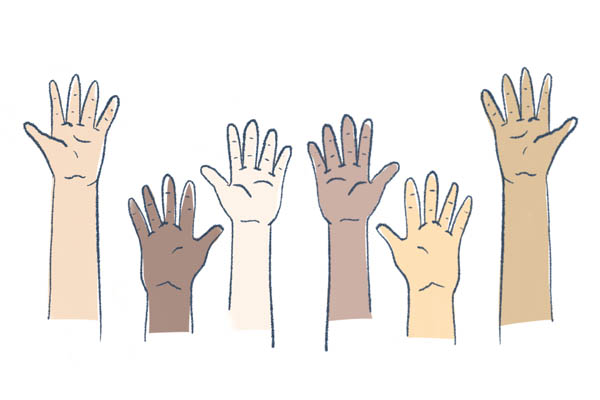A GW team led by GW Nursing Professor Christine Pintz, with funding from a four-year, $2.8 million Health Resources and Services Administration (HRSA) grant, will educate nurse practitioner (NP) students to better care for underserved communities in rural and urban areas.
The Nurse Practitioner Technology-Enhanced Community Health (NP-TECH) initiative will educate NP students on social determinants of health and population-based care. Students will also learn how to use telehealth and other digital health tools to facilitate patient engagement and remote monitoring. With these skills, NPs can better provide high-quality care to patients in underserved communities who might have chronic health issues or lack access to care.
“Because GW is in Washington, D.C., obviously we have some clinical sites and a curriculum that are focused on urban environments, and we have those experiences,” said Dr. Pintz, Ph.D., FNP-BC, WHNP-BC, RN, FAANP. “We felt like this was an opportunity to include a focus on rural health in our curriculum.”
And it’s needed. Workforce shortages mean that millions of Americans living in rural areas lack access to primary health care, according to Healthy People, an initiative of the federal Office of Disease Prevention and Health Promotion. Of the health care providers who serve rural areas, about 25% are NPs, according to a study published in Health Affairs.
GW Nursing’s doctoral programs, including the master of science in nursing (M.S.N.) and doctor of nursing practice (D.N.P.) are taught primarily online and attract students from all over the United States, including remote locations. “The reality is that our students are located across the entire country. Some live in rural areas and will probably choose to work in rural, underserved communities,” she said.
Primary care providers such as NPs should be familiar with three general areas of telehealth, said Neal Sikka, M.D., an associate professor at the GW School of Medicine and Health Sciences (GW SMHS) who’s also working on the NP-TECH initiative. Telemedicine is one area and includes remote diagnosis and treatment. Patient monitoring is another. Mobile health, which includes the use of apps and other tools, is the third.
Many opportunities exist within those areas of telehealth. For example, clinicians may use a special otoscope with a camera to diagnose an ear infection, monitor blood pressure daily at home and adjust medication when needed, or work with patients to use their smartphone to track activity and exercise, Dr. Sikka said.
In addition to Drs. Pintz and Sikka, a number of GW faculty members are working on this initiative. GW Nursing faculty include Laurie Posey, Ed.D., Sandra Davis, Ph.D., Tony Yang, Sc.D., LL.M., and Sherrie Wallington, Ph.D. Karen Lewis, Ph.D., from GW SMHS, is also on the team.
The initiative’s five-part plan starts with enhancing existing academic-practice partnerships and establishing a new rural partnership. The team will also develop and implement an experiential Technology-Enhanced Community Health (TECH) curriculum for the initiative’s scholars.
A network of preceptors will be trained, supported and compensated as initiative partners to enhance the NP education of 64 NP-TECH scholars. These individuals will receive funds to learn and participate in clinical experiences focused on providing care to underserved populations. Finally, the initiative will help connect graduates to employment opportunities in underserved communities.
The initiative’s first cohort will draw on students about to enter their final year in GW Nursing’s M.S.N. program and students about to enter their clinical year in the D.N.P. program. These cohorts will graduate in May 2020.


